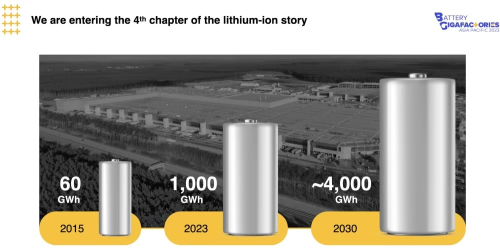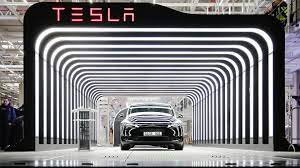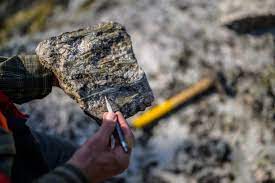Energy & Critical Metals
Benchmark: Battery capacity to increase 4-fold by 2030 amid qualification challenge outside Asia
Lithium ion battery capacity is set to grow four-fold by the end of the decade, but the industry must overcome cost and quality issues as it expands outside…

Lithium ion battery capacity is set to grow four-fold by the end of the decade, but the industry must overcome cost and quality issues as it expands outside of Asia, Benchmark’s Chief Operating Officer Andrew Miller said at the Battery Gigafactories Asia Pacific 2023 conference in Tokyo.
Global battery capacity is set to grow to 4 terawatt hours (TWh) in 2030 after surpassing the 1 TWh mark this year, Miller told delegates. In 2015, worldwide capacity was 68 gigawatt hours (GWh) according to Benchmark’s Gigafactory Assessment.
A large proportion of production is set to come online from outside of the Asia Pacific region but more than a third of that production is tied to or coming from producers that are untested or unqualified, according to Miller.
The bulk of expansions outside of Asia are coming from Europe and North America. By 2030 Europe’s share of global battery capacity is set to grow to 13.7% from 7.8% last year, while North America’s is set to increase to 14.7% by the end of the decade from 6% in 2022.
While initial expansions in these regions were driven by established tier 1 producers, recent years have seen several announcements from less experienced tier 1 and tier 2 players.
Making batteries at cost levels that spur mass adoption is one of the key questions for the industry as it looks to add scale to meet this emerging demand, Miller said.
Asia Pacific’s cell capacity share is set to fall to 70% in 2030 from 78.4% last year, according to Benchmark’s Gigafactory Assessment.
China is on track to maintain its dominance as the world’s top cell producer with 68% share in 2030.
Excluding China, Asia Pacific’s share of battery production is small. Still, Japan’s technology and innovation played a key role to scale from lab to commercialisation in the 1990s. Both Japanese and South Korean producers have also supported the development of capacity in Europe and North America.
If you think about the technology and the quality of batteries that we’re looking to bring to market, a huge amount of that expertise and that experience resides here in the Asia Pacific. This region is incredibly strategically important to the future of the global EV industry around the world.
—Andrew Miller

Uranium Exploration Company Announces Additional Staking in the Athabasca Basin
Source: Streetwise Reports 12/22/2023
Skyharbour Resources Ltd. announced an update from its Canada-based Falcon Project along with additional…
Tesla Launches New Mega Factory Project In Shanghai, Designed To Manufacture 10,000 Megapacks Per Year
Tesla Launches New Mega Factory Project In Shanghai, Designed To Manufacture 10,000 Megapacks Per Year
Tesla has launched a new mega factory…
Giving thanks and taking stock after “a remarkable year”
An end-of-year thank you to our readers, industry colleagues and advertisers before Electric Autonomy breaks from publishing until Jan. 2
The post Giving…













